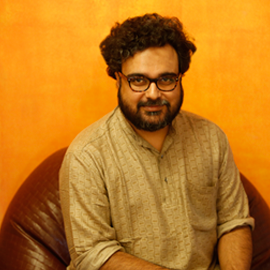Drenched in the rain, Rahul Gandhi brings UP Congress back to life

The final verdict in Uttar Pradesh is still far away. Much water remains to flow through the Ganga before we get to know who wins the electoral battle in India's politically most vital state.
Meanwhile, monsoon has overtaken the state these days. Both its weather as well as politics. There seems to be a change in weather in the Congress camp as well. The grand old party's is finally shedding its pallor and regaining its old colours.
Also read - Sheila chali sasural: 'Bahu' Dikshit to be Congress's face in Uttar Pradesh
The scattered party is appearing to rally behind the slogan '27 saal, UP behaal (UP in tatters for 27 years). This refers to the period since the last Congress government in the state.
The slogan is aimed at instilling a new confidence into the party to stand on its own feet. The party is faced with the battleground where it has few friends. It has to battle every other contender on its own.
The strategy

The Congress has sought to win Brahmin votes by projecting Sheila Dikshit as its chief ministerial candidate. It is being seen as a threat to BJP's formidable upper caste vote bank.
Rahul Gandhi's Lucknow visit on 29 July was even more interesting. Thousands of party activists were called to the state capital to make this event a success. The visit was part of the strategy to resuscitate party's election machinery. Nothing can be achieved unless the foot soldiers are in good spirits. The party leadership is well aware of this fact and the main purpose of Rahul Gandhi's meeting was to uplift the morale of party workers.
Rahul remained standing for most part of the meeting. The rain gods had already shown their benevolence on the venue before Rahul Gandhi's arrival. The tent erected on Ambedkar ground was drenching and workers were going helter-skelter. There were consistent appeals from the stage asking cadres to maintain decorum.
In the eyes of many observers, rain played spoilsport at the meeting. However, it also contributed to the meeting's success, if seen from another point of view. Many workers were seen carrying plastic red chairs to escape the rain. A spirited Rahul Gandhi decided to get wet to show solidarity with the activists. In the end both Rahul and the workers relished the rain and this filled the party with a new warmth.
A special ramp was erected for the meeting that extended to the audience benches on all sides. The activists surrounded the ramp on all sides, a welcome departure from the political culture where leaders are seated according to their importance at such events. The Congress Vice-President was equally near to all, looking straight into the eyes of ordinary workers sitting close by. Rahul instructed his guards to remain in the background as he,himself, engaged in a direct conversation.
Re-building the party is an essential part of strategist Prashant Kishor's roadmap for the Congress in UP. It cannot happen until the leadership wins the heart of ordinary supporters. Rahul Gandhi appeared to be doing the same in Lucknow.
Congress activists from different districts posed questions to Rahul Gandhi. The latter was unusually confident in answering them. He spoke with enthusiasm and tried to motivate the workers. He claimed the state progressed only under the Congress. Equating the Congress ideology with the nation's ideology, Rahul exhorted party activists to unite for a victory.
The Congress has tried to capitalise on the issue of Dalit atrocities in the past two years. Its leadership has latched on to every such instance, from Rohith Vemula's death to the incident in Una, Gujarat. It shows party's seriousness in winning back the confidence of Dalits and backward classes. However, this might not be easy in a state like UP where Mayawati still holds sway among Dalits.
Both BJP and Congress are eying non-Jatav votes to compensate for this.
Sonia Gandhi's upcoming road show in Varanasi on 2 August is also part of the same strategy. She is likely to raise the issue of cleaning the Ganga and as well as the unfulfilled promises regarding the city's development. From a party that was completely written-off in the state's political landscape till February this year, it is, at least, back in the reckoning.
The evidence lies in the sharp reactions that the Congress is now evoking from its competitors in the state. Samajwadi Party criticised Rahul Gandhi before his Lucknow visit whereas Mayawati questioned his laxity in raising the Una issue. The BSP supremo knows that the greatest threat to her Dalit support base comes from the Congress, more than any other party.
The Congress was a beaten pawn, not too long ago. Most people think it still is. However, underestimating an opponent could be fraught with danger in politics.
There is no doubt Congress faces monumental challenges in UP. It needs to rise from the ashes. Rahul and Sonia seem to have made an honest beginning. Priyanka Gandhi's entry would only strengthen this endeavour.
More in Catch - Sheila Dikshit as UP CM face: 5 reasons why Congress has aced it
5 reasons why Sheila Dikshit adds to Congress' losers' line-up in UP
First published: 30 July 2016, 10:33 IST






![BJP's Kapil Mishra recreates Shankar Mahadevan’s ‘Breathless’ song to highlight Delhi pollution [WATCH] BJP's Kapil Mishra recreates Shankar Mahadevan’s ‘Breathless’ song to highlight Delhi pollution [WATCH]](https://images.catchnews.com/upload/2022/11/03/kapil-mishra_240884_300x172.png)

![Anupam Kher shares pictures of his toned body on 67th birthday [MUST SEE] Anupam Kher shares pictures of his toned body on 67th birthday [MUST SEE]](https://images.catchnews.com/upload/2022/03/07/Anupam_kher_231145_300x172.jpg)






